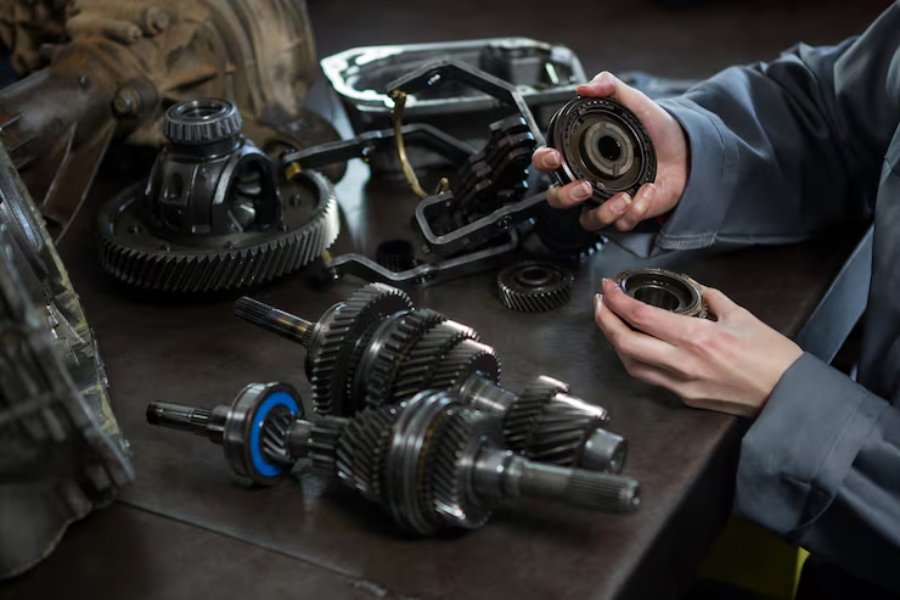If you wrench on weekends or simply want to keep your vehicle running without overpaying, car parts .com can feel like a superpower. It puts an entire catalog of OEM and aftermarket components at your fingertips, backed by photos, specs, and compatibility checks that help you avoid costly mistakes. In this guide, we’ll turn the noise into a clear plan: how to compare brands, confirm fitment, read warranties, and time your purchases so you get the best value. We’ll also show you how to use tools on car parts .com—from VIN matchers to buyer reviews—to minimize returns and maximize reliability.
Price matters, but so do safety and lifespan. That’s why we’ll break down when to choose genuine OEM, when trusted aftermarket wins, and which categories are absolutely worth a premium. You’ll learn a repeatable process to shortlist the right options, inspect the details that pros check first, and build a parts cart that fits your car and your budget. We’ll also cover shipping, core charges, and how to avoid delays by confirming quantities, gaskets, and small hardware that most buyers forget.
Car Parts .com: How to Choose The Right Auto Parts Online
Shopping for components can overwhelm even experienced DIYers because the internet multiplies choices. The key to using car parts .com effectively is to start with vehicle identity, not product hype. Add your exact year, make, model, engine, and options—or use your VIN—before you browse. That pre-filters every search so you’re seeing rotors that match hub diameter, pads that fit your caliper family, and belts cut to manufacturer length. When the catalog is correctly scoped, the rest gets easier, and your risk of returns collapses.
Fitment confidence comes from stacking checks. Start by reading the fitment table on each product page and verifying production date ranges against your build date sticker. Next, confirm OE reference numbers (often called “interchange” or “cross-reference”) that tie the aftermarket part back to the original spec. Many listings on car parts .com include the OE number; if your old part is handy, compare the casting or label. Where possible, look for technical drawings with measurements—bore sizes, thread pitch, and connector type—and match them to your component.
When To Choose OEM vs Aftermarket On Car Parts .com
Choosing between OEM and aftermarket shouldn’t be a guess. Use this quick guide—and the filters/specs on car parts .com—to match safety-critical OE fitment, smart wear-item swaps, and compliant performance upgrades to your VIN and goals.
OEM Fitment on Safety-Critical Systems
For brake hydraulics, airbag sensors, and steering components, OEM or Tier-1 equivalents reduce risk. Use car parts .com filters to surface OE brands or direct suppliers, then confirm part numbers against your VIN’s build list.
Aftermarket Wins for Wear Items
Filters, wipers, belts, and many suspension bushings offer excellent aftermarket choices. Compare material specs and warranties. On car parts .com, look for elastomer grades, filtration ratings, and heat tolerance in the specs tab.
How To Save Money With Car Parts .com Without Sacrificing Quality
Cut parts costs without cutting corners. Here’s how to use car parts .com—VIN-locked fitment, smart kits, and well-timed buys—to get OE-grade results for less.
- Start With VIN-Locked Fitment
Entering your VIN on car parts .com instantly narrows results to parts engineered for your exact configuration—engine, axle ratio, emissions package. This crushes return risk and saves hidden costs like re-shipping, lost time, and duplicate gaskets. VIN-locked fitment also reveals superseded part numbers so you can choose the latest revision rather than hunting for discontinued stock at inflated prices. - Compare Total Kit Pricing vs Piecemeal
Bundles can drop total cost by 10–25% and ensure you receive the small hardware that eats time to source. On car parts .com, compare a brake kit (pads, rotors, hardware) and individual line items in separate tabs. Check rotor metallurgy, pad compound, and included clips. If the kit uses a lesser compound, mix a premium pad with mid-tier rotors to preserve bite and budget.
Why Trust Car Parts .com for Aftermarket Parts?
Trust is earned by process, not promises, and car parts .com streamlines that process in ways brick-and-mortar stores struggle to match. First, fitment verification moves from guesswork to data: VIN filters, OE cross-references, and production date ranges shrink the universe to what truly fits your vehicle. Second, transparency improves decisions—clear photos, tech drawings, and spec tables let you compare metallurgy, connector types, and friction compounds before you buy.
Third, community feedback accelerates learning; verified owner reviews with mileage and install notes reveal how components behave after thousands of real-world miles, not just in a lab. Fourth, efficient logistics mean less downtime: you can pick warehouse locations and shipping speeds that align with a planned weekend job. Fifth, pricing clarity helps you avoid false economies. This type of process efficiency mirrors the Benefits of Digitising Your Employee Onboarding Process, where streamlined digital workflows reduce errors, save time, and improve overall confidence—exactly the same advantages car parts .com provides when buying components online.
Car Parts .com Buying Guide: From Cart to Curb
Skip the guesswork and buy with confidence. This car parts .com guide shows how to lock fitment with your VIN, match OEM numbers, and read spec tables so what arrives fits, performs, and lasts.
VIN, Trim, and Option Codes on car parts .com
Confirm engine code, drivetrain, and build date. Small differences (tow package, sport brakes) change rotors, pads, and cooling components. VIN entry on car parts .com prevents near-fit mistakes.
OEM Numbers, Interchange, and Cross-Reference
Match the OE number stamped on your part to the listing’s interchange. car parts .com often shows supersessions; pick the newest part family for better availability and revised designs.
Car Parts .com Shipping, Returns, And Fitment Confidence
Keep your project on schedule and your fitment stress-free. Here’s how to use car parts .com for smart shipping, quick inspections, and painless returns.
- Shipping Options That Match Your Timeline
Balance cost with reliability. For weekend jobs, choose mid-week arrival. car parts .com usually provides tracking so you can prep tools and workspace before the box lands.
- Inspect on Arrival
Open cartons carefully and save packaging until the test fit. Compare part numbers and dimensions to your old part. Bench-test electricals—bulbs, sensors—before teardown to avoid rework.
- Return Policy Best Practices
Photograph labels and the part in the packaging. If you need a return, those photos accelerate approvals. car parts .com return windows vary by category; know them before you wrench.
Conclusion
Shopping online for vehicle spares shouldn’t feel like a gamble. With car parts .com, you can verify fitment, compare brands, and schedule installs with clarity. Use VIN-based filters, read spec tables, and weigh warranty against price to build a smart cart. Bundle related items, plan shipping to match your weekend, and keep packaging until you confirm fit. Follow this blueprint and your preferred online auto parts marketplace becomes a reliable partner—saving you money today and headaches tomorrow.
FAQ’s
How do I make sure a part fits on car parts .com?
Enter your VIN, confirm production date range, and match the OE number from your old part with the listing’s interchange. Dry-fit mechanical parts and bench-test electrical items before teardown.
When should I pick OEM over aftermarket?
Choose OEM (or Tier-1 equivalents) for safety-critical systems—airbags, steering, brake hydraulics. For wear items like filters, wipers, and many bushings, reputable aftermarket often provides equal performance at a lower cost.
What if my shipment arrives damaged?
Photograph the packaging and part immediately, keep all materials, and contact support with your order number. Most vendors, including car parts .com, will arrange a replacement once evidence is provided.
How can I save on shipping and returns?
Group jobs into one order, choose nearby warehouses, and buy complete kits. Verify quantities and related hardware to avoid second shipments. Read return windows before you buy.
What’s a core charge and how do I get it back?
Some remanufactured parts (alternators, calipers) include a refundable core deposit. Return your old part clean, in the replacement’s box, using the provided label to receive your refund.







